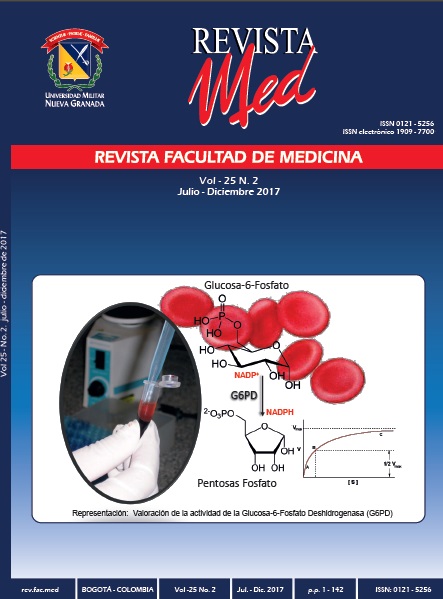Pertussis: enfermedad reemergente
Resumen
Introducción: Actualmente a pesar de las estrategias de vacunación a nivel mundial, B. pertussis se ha convertido en un problema de salud pública, sigue siendo una de las enfermedades menos prevenibles por vacunación en todo el mundo, aún en países desarrollados con amplia cobertura de vacunación.
Objetivo: Describir los principales mecanismos de virulencia asociados a la infección mediante los cuales la bacteria logra evadir la respuesta inmune, además de dar a conocer un panorama actual del estado de inmunización contra la tos ferina y la problemática de su reemergencia a nivel mundial.
Métodos: Se realizó una revisión mediante búsqueda electrónica de literatura; entre las estrategias de búsqueda se destaca el empleo de las bases de datos como PubMed, ScienceDirect, SciELO, Redalyc; y búsqueda en portales de salud; sobre aspectos generales de la enfermedad y su agente causal, además de últimas actualizaciones sobre el tema.
Resultados: Como lo confirman recientes estudios, el incremento del riesgo de infección por B. pertussis sigue presentándose en adolescentes y adultos debido a la disminución en la respuesta inmune inducida por la vacunación y la infección natural, por ende, la información actual indica que está reemergiendo la tos ferina en todo el mundo, situación que es necesario conocer para un oportuno diagnóstico y tratamiento.
Conclusiones: Análisis de la literatura demuestra la necesidad de ampliar el uso de técnicas moleculares; llevar a cabo la modificación de los programas de vacunación, con la administración de dosis de refuerzo entre adolescentes y adultos; además programas de monitoreo epidemiológico eficaces de recolección de casos con tos ferina y sistemas adecuados de notificación para lograr la reducción equitativa y sustentable de la morbilidad y mortalidad de ésta enfermedad.
Descargas
Lenguajes:
esReferencias bibliográficas
Campins M, Moreno D, Gil A, González F, Moraga FA, Arístegui J, et al. Whooping cough in Spain. Current epidemiology, prevention and control strategies. Recommendations by the Pertussis Working Group. Enferm Infecc Microbiol Clin. 2013; 31(4):240-53. DOI: 10.1016/j.eimc.2012.12.011.
Departamento de Salud y Hospitales de Louisiana, Oficina de Salud Pública, sección de Epidemiología de Enfermedades Infecciones, 2011.
Paddock CD, Sanden GN, Cherry J. Pathology and pathogenesis of Bordetella pertussis infection in infants. Clin Infect Dis. 2008;47:328-38.
WHO Challenges in global immunization and the Global Immnunization Vision and Strategy 20062015. Weekly Epidemiol Rec. 2007; 87:190-5.
Versteegh FG, Mooi-Kokenberg EA, Schellekens JF, Roord JJ. Bordetella pertussis and mixed infections. Minerva Pediatr. 2006; 58:131-7. PMID:16835573
Hewlett EL, Edwards KM. Clinical practice. Pertussis–not just for kids. N Engl J Med. 2005; 352:1215–1222. DOI: 0.1056/NEJMcp041025
Ledermann W. Brief history about Bordetella pertussis, an elusive mademoiselle.
Rev Chil Infect. 2004; 21(3): 241-246. http://dx.doi.org/10.4067/S0716-10182004000300018
Informe de la reunión de octubre de 1988. The Tokai J. of Exp. Clin. Med., 1989. Copenhage 22-26 de octubre 1988.
Wardlaw A, Parton R. Pathogenesis and inmunity in Pertussis, John Wiley and Sons, 1988. ISBN 0471918202, 9780471918202
World Health Organization. Pertussis vaccines: WHO position paper − September 2015. Wkly Epidemiol Rec. 2015; 90:433−58.
Kmietowicz Z. Pertussis cases rise 10-fold among older children and adults in England and Wales. BMJ 2012; 345:e5008. DOI: 10.1136/bmj.e5008.
Pillsbury A, Quinn HE, McIntyre PB. Australian vaccine preventable disease epidemiological review series: pertussis, 2006−2012. Commun Dis Intell Q Rep 2014; 38(3):E179−94. PMID: 25391404
Urbiztondo L, Broner S, Costa J, Rocamora L, Bayas J, Campis M, et al., Seroprevalence study of B. pertussis infection in health care workers in Catalonia, Spain. Hum Vaccin Immunother. 2015; 11(1):293–297. DOI: 10.4161/hv.36167
Cherry. Epidemic Pertussis in 2012 — The Resurgence of a Vaccine-Preventable Disease. N Engl J Med. 2012; 367:785-787. DOI: 10.1056/NEJMp1209051
Fedele G, Stefanelli P. Pertussis in infants and the resurgence of a vaccine preventable disease: what to do? Ann Ist Super Sanità. 2017; 53(2):100-103. DOI: 10.4415/ANN_17_02_04.
Forsyth K, Plotkin S, Tan T, Wirsing von Koning. Strategies to decrease pertussis transmission to infants. Pediatrics. 2015; 135:e1475–e1482. DOI: 10.1542/peds.2014-3925.
Hewlett EL, Edwards KM. Clinical practice. Pertussis–not just for kids. N Engl J Med. 2005; 352:1215–1222. DOI: 0.1056/NEJMcp041025
Oksuz L, Gurler N, Aqacfidan A. Investigation of seropositivity of Bordetella pertussis in adults in a university hospital. Mikrobiyol Bul. 2017; 51(1):62-72 PMID: 28283011 https://doi.org/10.5578/mb.46533
Maltezou HC, Ftika L, Theodoridou M. Nosocomial pertussis in neonatal units. J Hosp Infect. 2013; 85(4):243–248. doi: 10.1016/j.jhin.2013.09.009
Yin H, Ching S, Tay J, Chieh Y, Yin L, Lan P, et al. Lack of pertussis-protective antibodies in healthcare providers taking care of neonates and infants in a children's hospital. The Pediatric Infectious Disease Journal. 2017; 36(4):433-435 https://doi.org/10.1097/INF.0000000000001462
Kurehong C, Kanchanawarin C, Powthongchin B, Katzenmeier G, Angsuthanasombat C. Membrane-Pore Forming Characteristics of the Bordetella pertussis CyaA-Hemolysin Domain. Toxins 2015, 7, 1486-1496; doi:10.3390/toxins7051486
Yesmin K, Mamun KZ, Shamsazzaman SM, Chowdhury A, Khatun K, Alam J. Isolation of potential pathogenic bacteria from nasopharynx from patients having cough for more than two weeks. Bangladesh J Med Microbiol. 2010; 4:13–18.
Michigan Center for Public Health Preparedness. Basic reproductive rate (R0). University of Michigan, School of Public Health, Office of Public Health Practice, Ann Arbor, MI. 2010. https://practice.sph.umich.edu/micphp/epicentral/basic_reproduc_rate.php
Kretzschmar M, Teunis PF, Pebody RG. Incidence and reproduction numbers of pertussis: estimates from serological and social contact data in five European countries. PLoS Med. 2010. 7:e1000291. http://dx.doi .org/10.1371/journal.pmed.1000291.
Kilgore P. Salim A, Zervos M, Schmitt H. Pertussis: Microbiology, disease, treatment, and prevention. Clinical Microbiology Reviews. 2016; 29(3): 499-86. doi:10.1128/CMR.00083-15.
Instituto Nacional de Salud. Protocolo de Vigilancia en Salud Pública. Tos ferina. 2014.
Heininger U, Stehr K, Cherry JD. Serious pertussis overlooked in infants. Eur J Pediatr . 1992; 151:342–343. http://dx.doi.org/10.1007/BF02113254.
Centers for Disease Control and Prevention. Pertussis (Whooping Cough). Enero 2017. https://www.cdc.gov/pertussis/about/signs-symptoms.html
Centers for Disease Control and Prevention. Bordetella pertussis. 2017. https://www.cdc.gov/vaccines/pubs/pinkbook/downloads/pert.pdf
Cornia PB, Hersh AL, Lipsky BA, Newman TB, Gonzales R. Does this coughing adolescent or adult patient have pertussis? JAMA. 2010; 304:890–896. http://dx.doi.org/10.1001/jama.2010.1181.
Higgs R, Higgins S, Ross P, Mills K. Immunity to the respiratory pathogen Bordetella pertussis. Mucosal Immunology. 2012; 5(5):485–500; DOI:10.1038/mi.2012.54
Gouw D, Diavatopoulos DA, Bootsma HJ, Hermans PW, Mooi FR. Pertussis: a matter of immune modulation. FEMS Microbiol Rev. 2011; 35(3):441-74. DOI: 10.1111/j.1574-6976.2010.00257.x.
Carbonetti N. Pertussis toxin and adenylate cyclase toxin: key virulence factors of Bordetella pertussis and cell biology tools. Future Microbiol. 2010; 5:455–469. DOI:10.2217/fmb.09.133.
Weingart Ch, Weiss A. Bordetella pertussis Virulence Factors Affect Phagocytosis by Human Neutrophils. Infect Immun. 2000; 68(3):1735–1739. PMCID: PMC97341 PUBMED Bagley K, Abdelwahab S, Tuskan R, Fouts T, Lewis G. Pertussis toxin and the adenylate cyclase toxin from Bordetella pertussis activate human monocyte-derived dendritic cells and dominantly inhibit cytokine production through a cAMP-dependent pathway. Journal of Leukocyte Biology. 2002; 72(5):962-69. PMID:12429718.
Schneider O, Weiss A, Miller W. Pertussis toxin utilizes proximal components of the T-cell receptor complex to initiate signal transduction events in T cells. Infect. Immun. 2007; 75(8):4040–4049. DOI:10.1128/IAI.00414-07
Kamanova J. Kofronova O, Masin J, Genth H, Vojtova J, Linhartova I, et al. Adenylate cyclase toxin subverts phagocyte function by RhoA inhibition and unproductive ruffling. J. Immunol. 2008; 181(8): 5587–5597. PMID:18832717
Donato G, Goldsmith C, Paddock C, Eby J, Gray M, Hewlett E. Delivery of Bordetella pertussis adenylate cyclase toxin to target cells via outer membrane vesicle. FEBS Letters. 2012; 586(4): 459-465. .https://doi.org/10.1016/j.febslet.2012.01.032.
Chenal A, Karst CJ, Sotomayor CA, Wozniak KA, Baron B, England P, Ladant D. Calcium-Induced Folding and Stabilization of the Intrinsically Disordered RTX Domain of the CyaA Toxin. Biophysical Journal. 2010; 99(11): 3744–3753 DOI: 10.1074/jbc.M807312200
Rivero Y, Fando R. La toxina adenilato ciclasa-hemolisina de Bordetella pertussis: función en la patogénesis y aplicaciones. Revista CENIC. Ciencias Biológicas. 2013; 44(3):44-56.
Linhartová I, Bumba L, Mašín J, Basler M, Osička R, Kamanová J. RTX proteins: a highly diverse family secreted by a common mechanism. FEMS Microbiol Rev. 2010; 34(6):1076-112. doi: 10.1111/j.1574-6976.2010.00231.x.
Hewlett EL, Gray L, Allietta M, Ehrmann I, Gordon VM, Gray MC J. Adenylate cyclase toxin from Bordetella pertussis. Conformational change associated with toxin activity. Biol Chem. 1991; 266(26):17503-8. PMID: 1894634.
Rivero Y, Fando R. La toxina adenilato ciclasa-hemolisina de Bordetella pertussis: función en la patogénesis y aplicaciones. Revista CENIC. Ciencias Biológicas. 2013; 44(3):44-56.
Cannella S, Ntsogo V, Davi M, Malosse C, Sotomayor A, Chamot J. et al. Stability, structural and functional properties of a monomeric, calcium–loaded adenylate cyclase toxin, CyaA, from Bordetella pertussis. Sci Rep. 2017; 7: 42065. DOI: 10.1038/srep42065
Basler M, Masin J, Osicka R, Sebo P. Pore-Forming and Enzymatic Activities of Bordetella pertussisAdenylate Cyclase Toxin Synergize in Promoting Lysis of Monocytes. Infect Immun. 2006; 74(4):2207–14. DOI: 10.1128/IAI.74.4.2207-2214.2006
Rogel A, Hanski E. Distinct steps in the penetration of adenylate cyclase toxin of Bordetella pertussis into sheep erythrocytes. The Journal of biological chemistry. 1992; 267(31);22599-605. PMID:1429610
Eby J, Ciesla W, Hamman W, Donato GM, Pickles RJ, Hewlett EL, Lencer WI. Selective translocation of the Bordetella pertussis adenylate cyclase toxin across the basolateral membranes of polarized epithelial cells. J Biol Chem. 2010; 285(14):10662-70. DOI: 10.1074/jbc.M109.089219.
Basler M, Knapp O, Masin J, Fiser R, Maier E, Benz R, et al. Segments Crucial for Membrane Translocation and Pore-forming Activity of Bordetella Adenylate Cyclase. J Biol Chem 2007; 282(17):12419-12429. DOI:10.1074/jbc.M611226200
Osickova A, Masin J, Fayolle C, Krusek J, Basler M, Pospisilova E, et al. Adenylate cyclase toxin translocates across target cell membrane without forming a pore. Molecular Microbiology. 2010; 75(6):1550–1562. DOI:10.1111/j.1365-2958.2010.07077.x
Njamkepo E, Pinot F, François D, Guiso N, Polla BS, Bachelet M. Adaptive responses of human monocytes infected by Bordetella pertussis: the role of adenylate cyclase hemolysin. J Cell Physiol. 2000; 183(1):91-9. DOI:10.1002/(SICI)1097-4652(200004)183:1<91::AID-JCP11>3.0.CO;2-S. https://doi.org/10.1002/(SICI)1097-4652(200004)183:1<91::AID-JCP11>3.0.CO;2-S
Melvin J, Scheller E, Noel Ch, Cotter P. New Insight into Filamentous Hemagglutinin Secretion Reveals a Role for Full-Length FhaB in Bordetella Virulence. mBio. 2015; 6(4): e0118915. DOI: 10.1128/mBio.01189-15
McGuirk P, Mills K. Direct anti-inflammatory effect of a bacterial virulence factor: IL-10-dependent suppression of IL-12 production by filamentous hemagglutinin from Bordetella pertussis. Eur. J. Immunol. 2000; 30(2):415–422. DOI:10.1002/1521-4141(200002)30:2<415::AID-IMMU415>3.0.CO;2-X. https://doi.org/10.1002/1521-4141(200002)30:2<415::AID-IMMU415>3.0.CO;2-X
Hijnen M, Mooi F, van Gageldonk P, Hoogerhout P, King A, Berbers G. Epitope structure of the Bordetella pertussis protein P.69 pertactin, a major vaccine component and protective antigen. Infect. Immun. 2004; 72(7):3716–3723. DOI:10.1128/IAI.72.7.3716-3723.2004
Bouchez V, Brun D, Cantinelli T, Dore G, Njamkepo E, Guiso N. First report and detailed characterization of B. pertussis isolates not expressing Pertussis Toxin or Pertactin. Vaccine. 2009; 27(43):6034-41. DOI: 10.1016/j.vaccine.2009.07.074
Zeddeman A, van Gent M, Heuvelman CJ, van der Heide HG, Bart MJ, Advani A. Investigations into the emergence of pertactin-deficient Bordetella pertussis isolates in six European countries, 1996 to 2012. Euro Surveill. 2014; 19(33):pii: 20881. PMID: 25166348 https://doi.org/10.2807/1560-7917.ES2014.19.33.20881
Miyaji Y, Otsuka N, Toyoizumi-Ajisaka H, Shibayama K, Kamachi K. Genetic analysis of Bordetella pertussis isolates from the 2008-2010 pertussis epidemic in Japan. PLoS One. 2013; 8(10):e77165. DOI:10.1371/journal.pone.0077165.
Yukihiro Hiramatsu, Yusuke Miyaji, Nao Otsuka, Yoshichika Arakawa, Keigo Shibayama, Kazunari Kamachi. Significant Decrease in Pertactin-Deficient Bordetella pertussis Isolates, Japan. Emerg Infect Dis. 2017; 23(4):699–701. DOI: 10.3201/eid2304.161575
Carbonetti N, Artamonova G, Van Rooijen N, Ayala V. Pertussis toxin targets airway macrophages to promote Bordetella pertussis infection of the respiratory tract. Infect. Immun. 2007; 75(4):1713–1720. DOI:10.1128/IAI.01578-06
Weingart Ch, Weiss A. Bordetella pertussis Virulence Factors Affect Phagocytosis by Human Neutrophils. Infect Immun. 2000; 68(3):1735–1739. PMCID: PMC97341.
Ye P, Rodriguez FH, Kanaly S, Stocking KL, Schurr J, Schwarzenberger P, et al. Requirement of interleukin 17 receptor signaling for lung CXC chemokine and granulocyte colony-stimulating factor expression, neutrophil recruitment, and host defense. J Exp Med. 2001; 194(4):519-27. PMCID: PMC2193502
Ross P, Sutton C, Higgins S, Allen A, Walsh K, Misiak A, et al. Relative Contribution of Th1 and Th17 Cells in Adaptive Immunity to Bordetella pertussis: Towards the Rational Design of an Improved Acellular Pertussis Vaccine. PLoS Pathog. 2013; 9(4):e1003264. DOI: 10.1371/journal.ppat.1003264
Hernández J, Urcuqui S. Activación y regulación de inflamasoma NLRP3 en las enfermedades infecciosas. Iatreia. 2012; 25(4):380-390.
Li H, Willingham SB, Ting JP, Re F. Cutting edge: inflammasome activation by alum and alum's adjuvant effect are mediated by NLRP3. J Immunol. 2008; 181(1):17-21. PMCID:PMC2587213 https://doi.org/10.4049/jimmunol.181.1.17
WHO. Immunization, Vaccines and Biologicals. Manual for Quality Control of Difteria, Tetanus and Pertussis vaccines. 2013.
Morel S, Denoel P, Godfroid F, Cortvrindt C, Vanderheyde N, Poolman J. Induction of Bordetella pertussis -specific immune memory by DTPa vaccines. Vaccine. 2011; 29(18):3449-55. https://doi.org/10.1016/j.vaccine.2011.02.062
Masin J, Osicka R, Bumba L, Sebo P. Bordetella adenylate cyclase toxin: a unique combination of a pore-forming moiety with a cell-invading adenylate cyclase enzyme. FEMS Pathogens and Disease, 2015; 73(8): ftv075. doi: 10.1093/femspd/ftv075.
Gustafsson L, Hallander H, Olin P, Reizenstein E, Storsaeter J. A controlled trial of a two-component acellular, a five-component acellular, and a whole-cell pertussis vaccine. N Engl J Med 1996; 334:349-356. DOI: 10.1056/NEJM199602083340602
Hegerle N, Dore G, Guiso N. Pertactin deficient Bordetella pertussis present a better fitness in mice immunized with an acellular pertussis vaccine. Vaccine. 2014; 32(49):6597-600. https://doi.org/10.1016/j.vaccine.2014.09.068
Hegerle N, Guiso N . Antibody-mediated inhibition of Bordetella pertussis adenylate cyclase-haemolysin-induced macrophage cytotoxicity is influenced by variations in the bacterial population. Microbiology. 2014; 160(5):962-9. DOI: 10.1099/mic.0.074690-0.
Martin S, Pawloski L, Williams M, Weening K, DeBolt Ch, et al. Pertactin-Negative Bordetella pertussis Strains: Evidence for a Possible Selective Advantage. Clin Infect Dis. 2015; 60(2):223-227. DOI: https://doi.org/10.1093/cid/ciu788.
Fernández S, Landys M, Gutiérrez N, Corcho L, Blanco A, Serrano D, et al., A Bordetella pertussis proteoliposome induces protection in mice without affecting the immunogenicity of diphtheria and tetanus toxoids in a trivalent formulation. Clin Exp Vaccine Res. 2016; 5(2):175-8. DOI: 10.7774/cevr.2016.5.2.175.
Fernandez S, Fajardo EM, Mandiarote A, Gemma A, Padrón M, Acosta M, et al. A proteoliposome formulation derived from Bordetella pertussis induces protection in two murine challenge models. BMC Immunol. 2013; 14(1):S8. DOI: 10.1186/1471-2172-14-S1-S8
Mooi F, Van Der Maas N, De Melker H. Pertussis resurgence: waning immunity and pathogen adaptation - two sides of the same coin. Epidemiol Infect. 2014; 142(4):685-94. DOI: 10.1017/S0950268813000071.
Octavia S, Maharjan R, Sintchenko V, Stevenson G, Reeves P, Gilbert G, Lan R. Insight into evolution of Bordetella pertussis from comparative genomic analysis: evidence of vaccine-driven selection. Molecular Biology and Evolution. 2011; 28(1):707–715. doi: 10.1093/molbev/msq245.
M van Gent, Bart M, van der Heide, Heuvelman K, Mooi F. Small mutations in Bordetella pertussis are associated with selective sweeps. PLoS One. 2012; 7(9):e46407. doi: 10.1371/journal.pone.0046407.
Kallonen T, Grondahl K, Elomaa A, Lutynska A, Fry N, Mertsola J, He Q. Differences in the genomic content of Bordetella pertussis isolates before and after introduction of pertussis vaccines in four European countries. Infect Genet Evol. 2011; 11(8):2034–42. doi: 10.1016/j.meegid.2011.09.012.
Heikkinen E, Kallonen T, Saarinen L, Sara R, King A.J, Mooi F, et al. Comparative genomics of Bordetella pertussis reveals progressive gene loss in Finnish strains. PLoS ONE. 2007; 19;2(9):e904. DOI: 10.1371/journal.pone.0000904.
Weigand M, Peng Y, Loparev V, Batra D, Bow den K, Burroughs M, et al. The History of Bordetella pertussis Genome Evolution Includes Structural Rearrangement. J Bacteriol. 2017; 199(8). pii: e00806-16. DOI: 10.1128/JB.00806-16
Minh N.N.T., He Q., Ramalho A., Kaufhold A., Viljanen M., Arvilommi H., et al: Acellular vaccines containing reduced quantities of pertussis antigens as a booster in adolescents. Pediatrics 1999; 104: pp. e70 https://doi.org/10.1542/peds.104.6.e70
Gentile A. Infección por Bordetella pertussis. Arch Argent Pediatr. 2010; 108(1):78-81.
Manual Para el diagnóstico de Bordetella pertussis/Bordetella parapertussis. Diagnóstico de laboratorio de la tos ferina. IPK. La Habana: MINSAP; 2010.
Word Health Organizartion. WHO Vaccine Assessment and Monitoring team of the Department of Vaccines and Biologicals. WHO-recommended standards for surveillance of selected vaccine-preventable diseases. Geneva: WHO; 2013.
Word Health Organization. WHO Challenges in global immunization and the Global Immnunization Vision and Strategy. Weekly Epidemiol Rec. 2015; 87:190-5.







.png)





